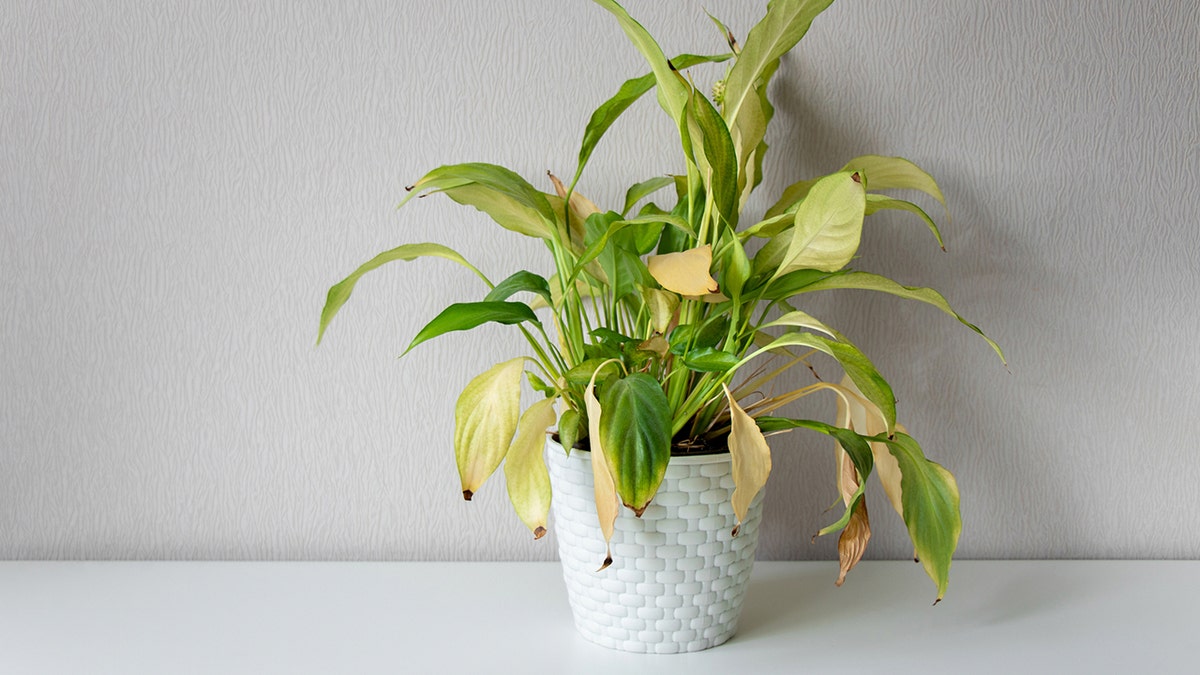Florida dog owner warns poisonous plant is threat to four-legged friends
According to the ASPCA, just 1 or 2 seeds from the Coontie Palm can kill a dog.
It’s alarming when plant leaves turn yellow, but it’s not the end of the world. Yellow leaves are a symptom of a fixable problem.
Like most plant maladies, yellow leaves have several causes. The trick is determining which one you’re dealing with and how to help your houseplant thrive again.
Moisture Stress
We’ll start with the most common causes for houseplant leaves turning yellow: overwatering and underwatering. Fortunately, these are also the easiest to remedy.
"When there is not enough water in the soil, the plant finds it difficult to accumulate the proper nutrients it needs to photosynthesize," notes Andrew Gaumond, horticulturist, botanist and director of content at Petal Republic. "A result of this is the lack of chlorophyll, which causes the leaves to turn yellow."
How can you tell that underwatering is your problem? First, check your soil. If it’s bone dry several inches down, it’s time to water your plant. You can also look for visual signs that your plant needs more water. Katie Williams, a horticulturalist who teaches at studio BE, explains that underwatered plant leaves "will look dry, yellow and the leaf margin can be crispy. The leaves may start to drop to conserve water."

Yellowing leaves may be the result of several issues, including low light, not enough water, or even stress from repotting. (iStock)
Take care not to overcorrect your watering schedule. Drowning your plant can also cause yellow leaves. "If the leaves are yellow, limp and downward curling, check the soil and the roots!" Williams says. "If the roots are brown and mushy, your soil may be water-logged. Healthy roots look firm and white."
Too much water also attracts pests and creates other houseplant problems like moldy soil. If you can’t seem to find the right watering schedule for a houseplant, try using some helpful urban gardening tools, such as a self-watering planter or a soil tester.
Light Levels
Getting the right amount of light for a houseplant can be tricky since you can’t exactly move your windows. Some homes are full of natural light, while others barely have any. A little research — and perhaps some trial and error — will help you find the sunlight sweet spot for your leafy greens.
More From Family Handyman
Too much light is an issue, but yellow plant leaves are due to too much shade. "Lack of sunlight is a common reason that leaves turn yellow," Williams explains. "Whereas, brown crispy leaves or leaves that are bleached may be a sign that your plant is getting sunburn." Move plants that need more sunlight closer to a window.
If you don’t have many windows, or the windows you do have are inconveniently located, grow lights are a great tool. They can also supplement sunlight during short winter days. When you shop for new plants in the future, look for plants that thrive in low light.
Environmental Conditions
Although unfavorable sunlight and water are the most likely causes of houseplant leaves turning yellow, it’s possible that you’re doing everything right. Yellow leaves could be a reaction to an environmental condition. Plants grow too big for their pots. And, like us, they’re sensitive to changes in temperature and humidity.
Repotting

Plants may need to adjust after repotting, and some yellowing isn't uncommon. (iStock)
Yellow leaves might mean it’s time to repot. Roots need enough room to absorb nutrients and water. However, Gaumond notes, "you may notice the leaves yellowing a little in the week or so after the repotting occurred as the plant adapts and settles into the new pot. During this period, I avoid fertilizing to allow the plant to revive itself naturally." Repot when necessary, and give your plant some time to get used to its new home.
Humidity
Many popular houseplants prefer humid air. If you suspect dryness is causing your plant leaves to turn yellow, Gaumond suggests increasing humidity by placing a water-filled tray with stones beneath the pot or misting the leaves.





















